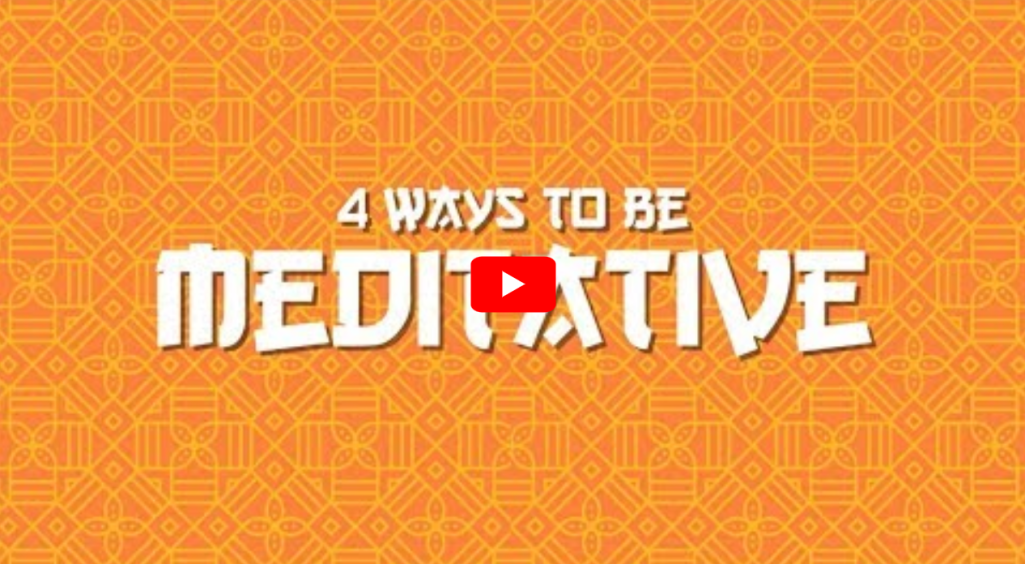Yoga & Meditation
"The science of Yoga is not just about health and Fitness. It is an ultimate solution for every aspect of human exsistance."
-Sadhguru
What is Yoga?
The word yoga means "Union". Yoga is not just a kind of sport that is about stretching the body, but an ancient, scientific system based on 8 limbs that consists of various tools for self-transformation. Physical yoga positions also called as "Asanas" are only a small part of this profound system.
What is Classical Hatha Yoga?
The type of yoga that is known today as a sport, especially in the western world, has very little to do with the original, ancient and profound yogic system. Classical hatha yoga is yoga in its most original and unaltered form, as it was taught by Shiva/ Adiyogi himself. Hatha yoga is a profound system of yoga that offers various methods with which you can specifically manipulate your own chemistry in such a way that it serves your transformation and well-being.
How do yogic practices work?
Yogic practices are scientific technologies, based on a deep understanding of the human system, that can help every human- being to turn inward and unfold their ultimate potential. Yogic practices are methods that can transform every aspect of your life if you are willing to use them properly.
Where does Yoga come from?
Over 15 thousand years ago, Adiyogi/ Shiva, the first yogi, transmitted 112 methods of self-transformation to his 7 deciples (the Saptarishis), with which every human being can transcend his limitations and reach his ultimate nature. These methods are considered as the science of yoga.
Who is Adiyogi?
Adiyogi, also known as Shiva, is not a god but the first yogi and at the same time the first guru. He was a unique being who was able to transcend the limitations of his physicality and experience dimensions that no one had experienced before him. Through his abilities and deep understanding of the human system, he was able to offer the science of yoga to humanity and give everyone the opportunity to experience what he was able to experience.
Who is a Guru?
A guru is not a teacher or preacher but someone who can facilitate the spiritual process within one and can bring change and transformation to one's consciousness. Although the word "guru" is often misunderstood in the Western world, in other regions of the world a guru is of enormous importance to every spiritual seeker.
Who is Patanjali?
Patanjali was an Indian sage and the author of the so-called Yoga Sutras. The Yoga sutras were written about 2000 years ago. In this Patanjali summarized the science of yoga into 8 limbs and is thus considered as the father of "modern" yoga.
What are the 8 limbs of Yoga?
The 8 limbs of yoga include "Yama" (social discipline), "Niyam" (self-discipline), "Asana" (body discipline), "Pranayama" (breathing discipline), "Pratyahar" (sense discipline), "Dharana" (goal discipline), "Dhyana" (meditation discipline) and "Samadhi" (self realization). These disciplines and associated practices can be used to transform almost every aspect of a human- beings life.
What are the different paths of yoga?
There are four basic types of yoga: Karma Yoga (the path of selfless action), Gnana Yoga (the path of intelligence), Bhakti Yoga (the path of devotion) and Kriya Yoga (the path of using ones energies) that one can use to reache his ultimate nature. The reason for these four different paths is because a human being is a combination of these four aspects: body, mind, emotions and energy.
What is a Kriya?
The word "Kriya" means inner action. In the yogic system there are various kriyas- practices which serve to carry out certain internal actions to achieve mastery over one's life energies. For someone who has mastery over his own life energies through Kriya Yoga, holistic health and well-being will be a natural consequence.
What are Chakras?
"Chakras" are energy centers in the human system. The vital life energy called "prana" moves along pathways ("nadis") through the human system. The points where these pathways meet are called as chakras. There are 72,000 nadis and 114 chakras in the human body. 7 of the 114 chakras are referred to as the major chakras. The 72,000 nadis in the human system are branches of the two basic nadis "pingala" (right/ masculine energy) and ida (left/ feminine energy). This is the energy physiology of every human being.
What is a Mantra?
To understand the segnificants of a mantra you must first understand that the whole creation is an algumination of different sounds. Every object has a certain sound attached to it. Mantras are usually in Sanskrit language. Sanskrit language is a language that is predominantly not based on communication with meanings invented by humans but consists of the universal sounds of creation. If you utter a word or sound in Sanskrit language you create resonance and are relating directly to this form. Mantras are certain combinations of such pure sounds that can work as a key and bring one closer to the process of life.
Yantras and Lingas
"Yantra" and "Linga" means a form or a machine. In the Indian culture and the yogic tradition, certain physical forms have been created for thousands of years, which are referred as gods. These forms are yantras or lingas and are tools or machines that have been constructed in such a way that one can use them to experience other dimensions of life.
Yoga and Hinduism
Yoga has its origins on the indian subcontinent and is in many ways India's gift to the rest of the world. However, yoga has nothing to do with hinduism, religion, belief systems or philosophies. India has always been a land of seekers and not of believers, which makes this civilization unique and a role model for the entire world.
What is Sadhana?
Sadhana means something like "guiding correctly" or "leading to a goal". Sadhana are usually certain yogic practices, depending on the person, that are practiced on a daily basis in order to establish and engineer oneself. Daily sadhana has nothing to do with other people or the world around you but is a pure investment in yourself and your personal growth. For many yogis, their daily sadhana is at least as important as taking a daily shower or brushing their teeth in the morning. Through their Sadhana practices, they ensure that they function optimally at all levels and are capable of abilities considered by others to be almost superhuman.
What are the benefits of yoga?
Practicing yoga regularly can have many benefits for ones physical and mental health. As there are different types and practices of yoga, there are different benefits. Yoga can help to lose weight, relieve back pain, build muscle and flexibility. It can reduce stress or improve immunity and sleep. For those who want to go beyond simple health benefits, yoga offers a wonderful opportunity to begin the spiritual journey to oneself and thus fundamentally change the entire experience of one's life.
Scientific Research Studies on the Effects of Classical Isha Hatha Yoga
Learn about the scientifically proven effects of classical Isha Hatha Yoga on stress, joy, energy, mindfulness and work engagement.
What is Meditation?
Meditation is not something you can do, but a quality you can become. To be in a meditative state means to simply be, fully aware and clear but without being agitated and attached to your body, mind and emotions. What is called as meditation is only a method to achieve this state. It is a method to experience life in its full depth and not only on the surface, a method to realize the beauty of your existence.
What is a Mudra?
Many people know the classic image of a meditator sitting with a certain hand position. Such a hand position is called mudra. When forming a mudra, the hands are used as a kind of control console and the way in which one's own system functions can be influenced and changed simply by holding a certain hand position or mudra.
Segnificants of the Sound "Aum"
The chanting of the sound "Aum" is now very well known around the world and is said to bring relaxation and help to meditate. However, only very few people are aware that the sounds "Aum" are the basic sounds of all other sounds, are also known as universal sounds, and that regular and correct chanting of these sounds can do wonders for ones wellbeing.
Why should one meditate?
Every experience of our life is not experienced outside, but within ourselves. The source of our experience of life is within us. Meditation is a method of getting access to this source and realizing that our life is entirely our own making. It is a method of determining our own destiny and the quality of our lives.
Register for Free Online Yoga Session!
Learn various simple but powerful yogic practices that can improve your general fitness, health and overall wellbeing.
2025 Ceternal. All Rights Reserved.
Wir benötigen Ihre Zustimmung zum Laden der Übersetzungen
Wir nutzen einen Drittanbieter-Service, um den Inhalt der Website zu übersetzen, der möglicherweise Daten über Ihre Aktivitäten sammelt. Bitte überprüfen Sie die Details in der Datenschutzerklärung und akzeptieren Sie den Dienst, um die Übersetzungen zu sehen.































